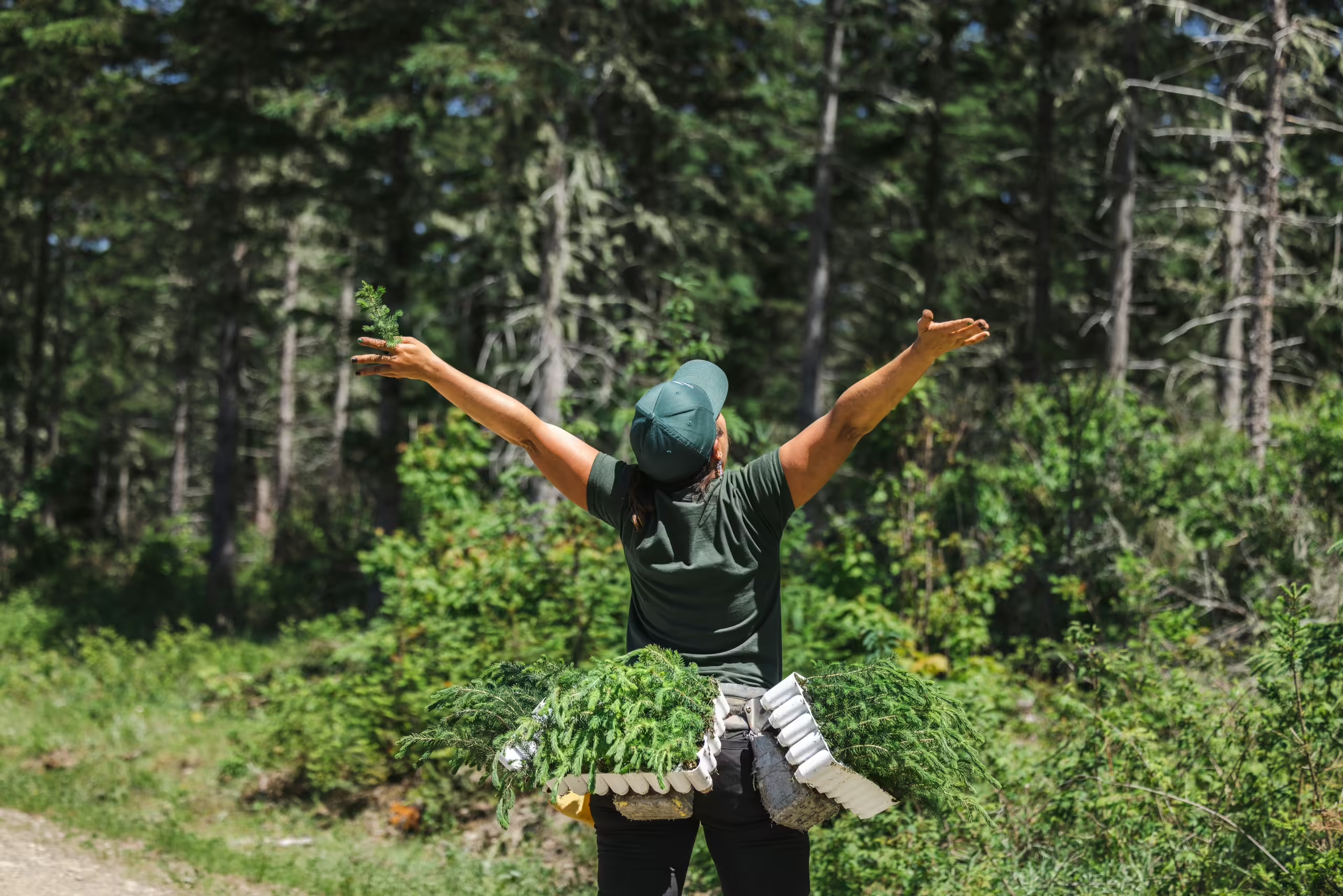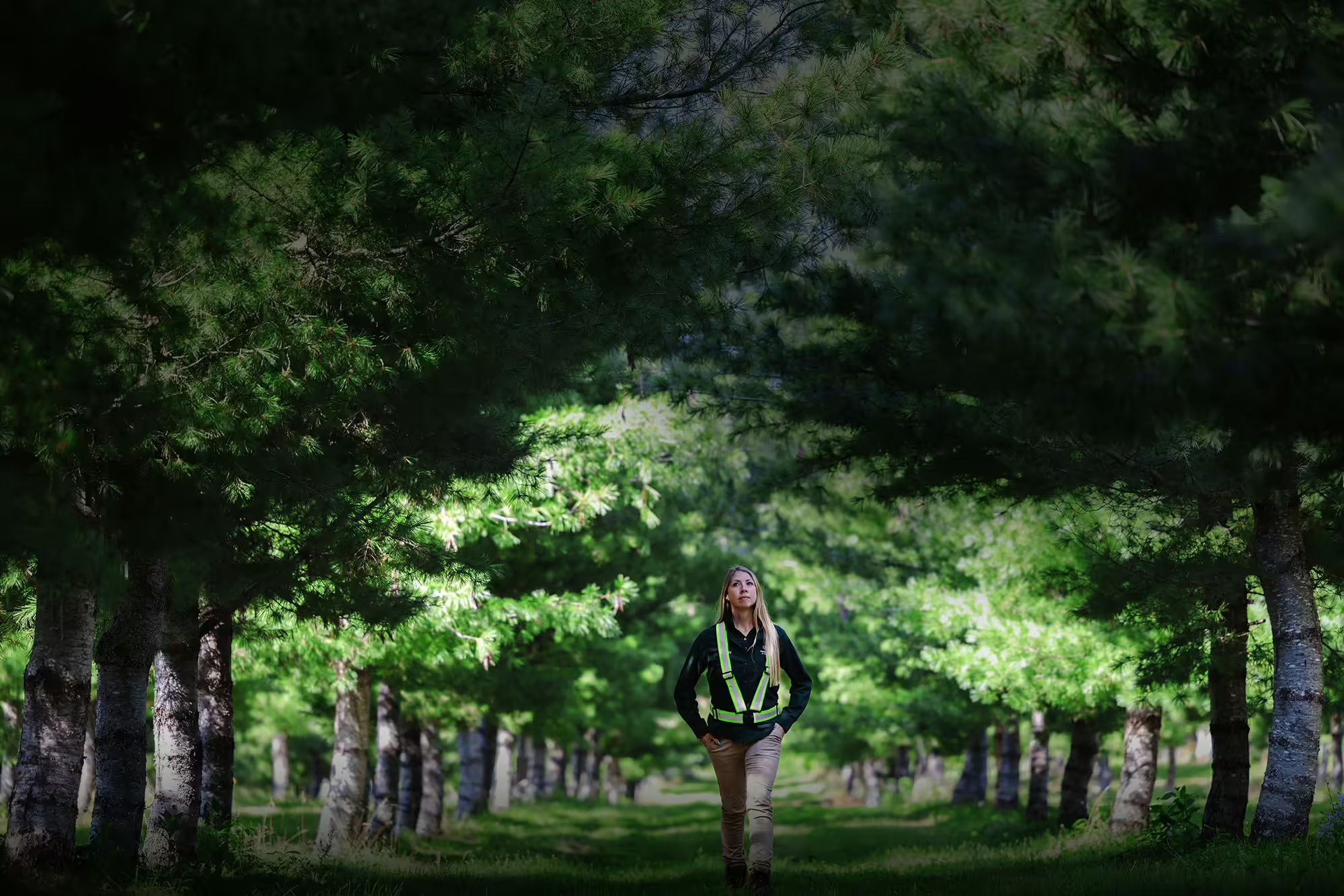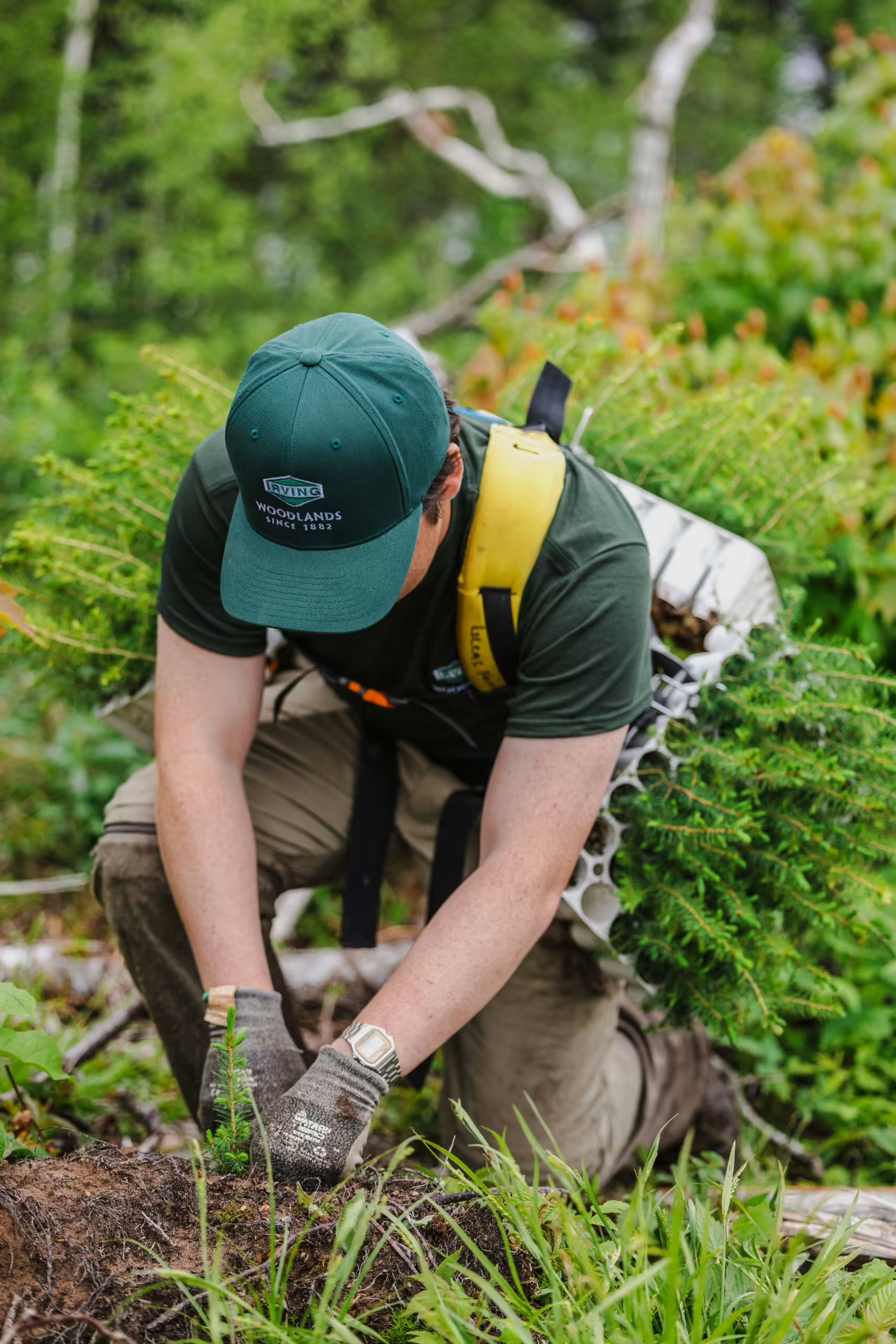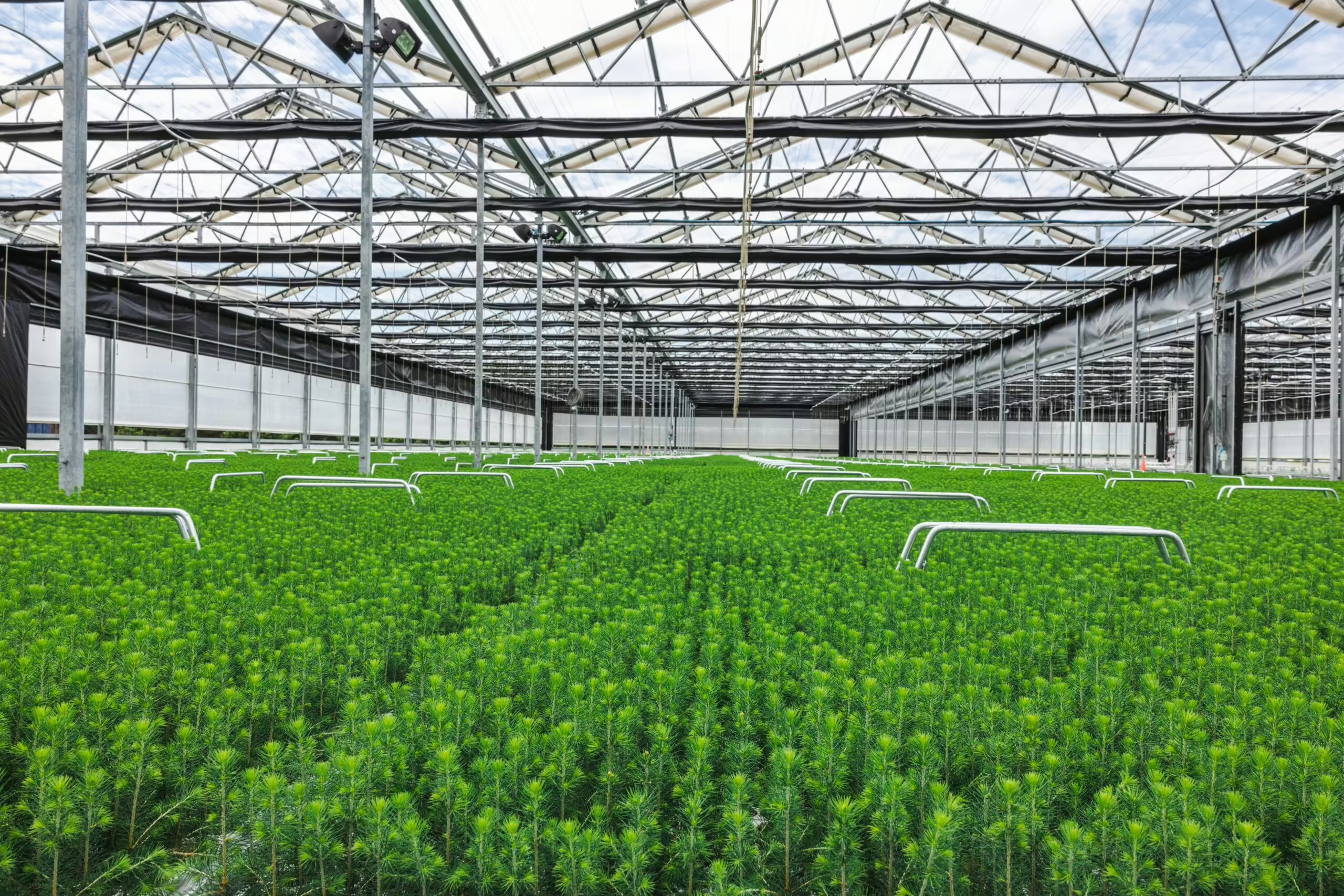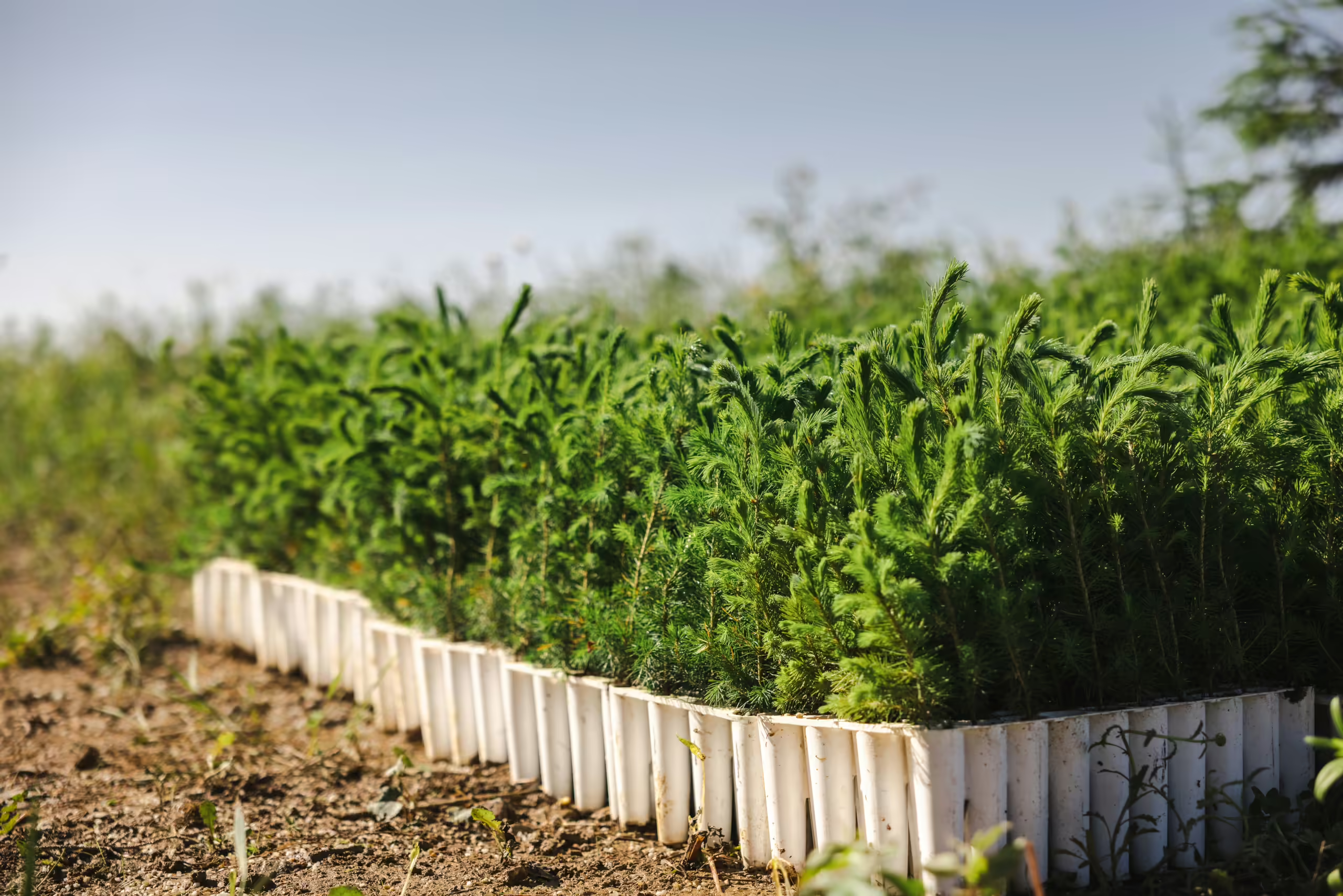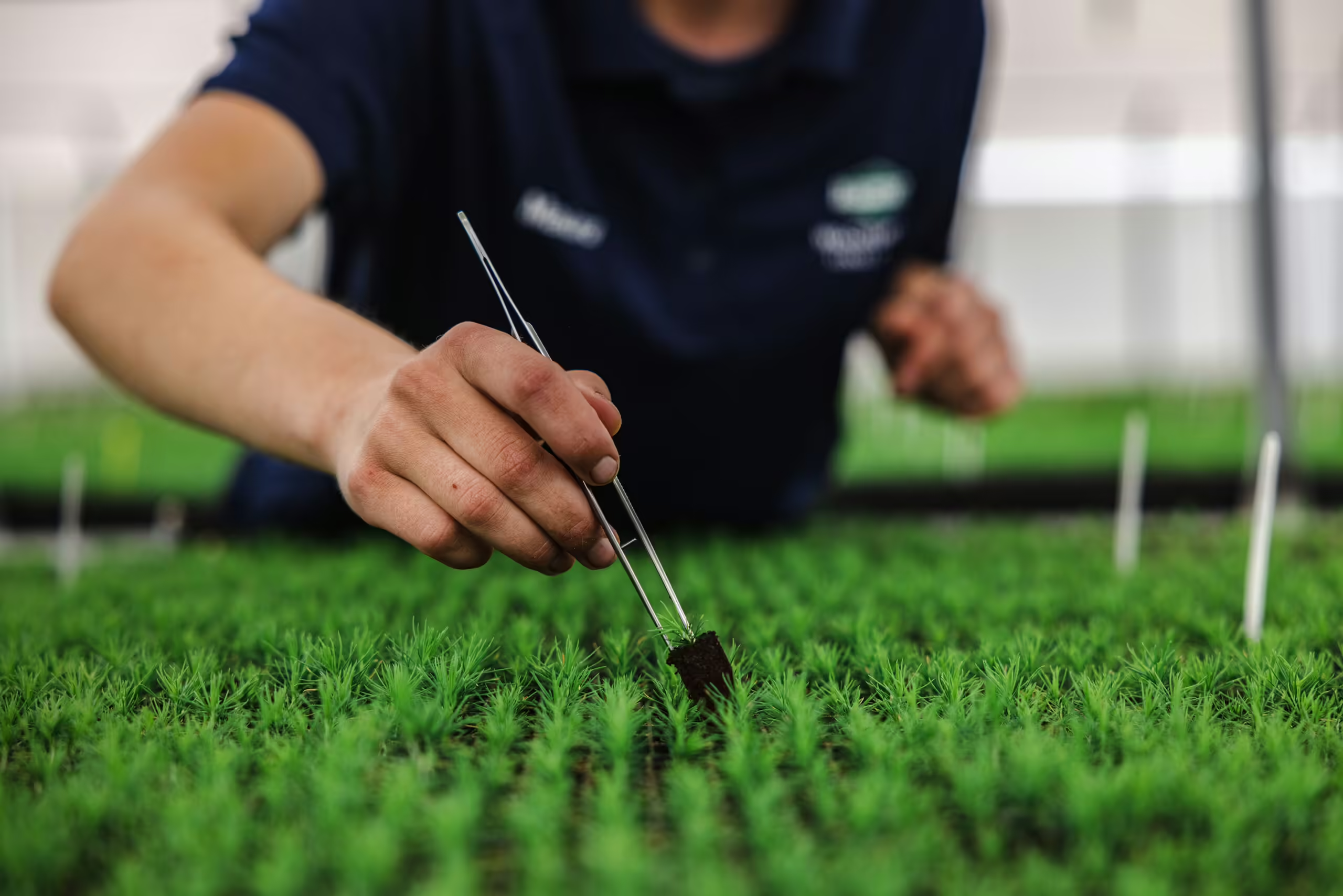Climate
A well-managed forest works for our climate by removing and storing carbon.
In fact, a planted hectare captures four times more carbon dioxide than non-managed areas. That’s because forest management practices like tree planting and selective harvesting allow for the growth of four times more wood per hectare compared to natural regeneration. This has many upshots for our planet.
The practice of growing more wood than is harvested allows for the removal of more CO2 from the atmosphere by storing it in wood, balancing out emissions. In 2020, our forest supply chain was certified carbon neutral under the international PAS2060:2014 reporting standard, meaning more carbon is stored in the forest land we manage than is emitted by our operations. This was followed in 2023 by the certification of our tissue products as carbon neutral by The Carbon Trust.
FORESTS PRODUCTS ARE RENEWABLE
Have you ever noticed paper straws and wooden cutlery are forest products? More and more, as the world moves away from single use plastics, paper bags, packaging and wooden eating utensils are filling that void. In the construction sector, lumber, mass timber and engineered wood are becoming the preferred option over concrete and steel.
With the world transitioning to renewable consumer products, the working forest can fulfil that demand. Forest products are renewable. They are a product of the working forest, which is a continuous cycle of harvest and renewal.
CLIMATE
RENEWABLE & RESPONSIBLE
We are building climate change resiliency into the forests we manage through world class research. Our nursery and lab facilities identify superior tree families of robust tree varieties, which we then plant and maintain in the forest conditions that will give them the best chances to thrive.
New Brunswick’s forests are healthy. They have diversity in tree species and age and have very few losses from wildfire and pests.
In the last 50 years, softwood and hardwood inventories haven’t changed. New Brunswick’s forests are part of the Acadian Forest, which also covers Maine and Nova Scotia and is characterizes by its hardwood-dominant south, softwood-dominant north and mixed transition zone. More than 20 tree species are present in New Brunswick’s forestland, representing a mix of softwood and hardwood and a good assortment of tree age stages. In fact, planted stands, made up of 27 tree species, are just as diverse as natural spruce/fir forests, which have 26 species in their makeup.
This diversity in tree species and ages has the additional benefit of providing a range of habitat types which support diverse species of plants, birds, mammals, reptiles, amphibians, insects and fish.
DID YOU KNOW
We use every part of every tree that we can.
Portions of the tree that can’t be used as lumber are used in other areas of the supply chain. Wood chips are taken from our sawmills to our pulp and paper mill, becoming kraft pulp, which is converted into tissue at our tissue mills. Sawdust is converted into wood pellets for use as biofuel. Other residuals like wood waste and tree bark are burned in biomass boilers to power our sawmills, avoiding emissions from Bunker C oil.
MYTHS
- Tree harvesting does not assist in carbon reduction.
- Forestry practices remain unchanged from the past.
- Forest Management reduces wildlife habitat.
- We do not use the whole tree during processing.
- We plant in every area that we harvest.
- We harvest more than we grow, which impacts future forest sustainability.
- The working forest impacts old growth forest.
- Planted areas are plantations or monocultures.
FACTS
- Regenerating forests sequester more CO2 than they emit. Carbon is also stored for hundreds of years inside forest products in homes, furniture and other goods.
- Our team of professionals try to predict how the actions of today will affect the forest in the future. We use state-of-the-art technology and research to ensure we make the best decisions on the ground, and we constantly adapt our management practices as we learn.
- Forest management creates a diverse age class structure within the forest that benefits many different species, from those that like young stands to those that prefer older ones.
- We use every part of every tree that we can. This includes everything from chips and lumber to bark, sawdust and shavings.
- We plant in less than 25 per cent of the areas we harvest, which means 75 per cent is left to grow back naturally to soft wood, hardwood or mixed wood.
- We grow more wood than we harvest every year. We plant between 20 and 25 million trees and harvest less than 2 per cent of the land base annually.
- More than 400 years of European settlement has heavily influenced the Acadian Forest, which covers New Brunswick, Nova Scotia and Maine. As a result, our operations are not found in areas of either intact or primary old growth forests.
- Plantations involve the supplanting of native species to often a single exotic species that typically forms monocultures. Planted areas are not monocultures. We plant six tree species and planted areas have plenty of naturally regenerating species too.
CLIMATE
WILDFIRE RESILIENCE
DID YOU KNOW
Managed forests are more resilient to wildfires.
Climate change is altering precipitation patterns and the potential impact on wildfire rates, making it more important than ever that working forests have forest fire mitigation built in.
The working forest in New Brunswick falls within the Acadian Forest landscape. Located across New Brunswick, Nova Scotia and Maine, this forest is a mix of softwood-dominant, hardwood-dominant and mixed areas. Unlike the boreal and mountain west forests of other parts of North America, which have large tracts of pure softwood trees, the hardwood patches of the Acadian Forest act as natural fire breaks, since hardwood trees don’t burn as easily. The Acadian Forest also has higher moisture levels due to its increased levels of rainfall and humidity, making it less susceptible to fire.
The working forest contribute to wildfire resiliency by:
- Continuous cycle of harvest and renewal – Older and dead trees with more fuel to burn are harvested, leaving younger trees with less fuel behind, meaning there’s less total fuel on the landscape.
- Practice of thinning – Smaller, less healthy and dead trees (called ladder fuels) are removed to leave more space for the remaining trees to grow, making it more difficult for fire to climb from the ground to the treetops, where it’s more challenging to suppress fires.
- More sunlight – Sunlight is better able to penetrate into thinned areas of the forest floor, leading to increased plant life that boosts moisture levels.
- Network of roads – Working forests require the upkeep of forest roads, which also allow firefighters better access to rapidly respond to fires at the ground level.
Our total deployed capacity is 40,800 gallons – greater than that of the province of Nova Scotia (16,200 gallons) and New Brunswick (36,300 gallons).
A well-managed working forest also means being ready to mount a robust response in the event of a forest fire outbreak. Investments in new equipment and training help to keep the 2.377 million forest hectares (5.872 million acres) we manage safe.
BY THE NUMBERS
4 AIR TRACTOR
AT-802 aircraft
1 KODIAK
spotter plane
2 HELICOPTERS
(300 gallons)
37 FIRE TRUCKS
(1,000 gallons)
115 FIREFIGHTERS
3 HELICOPTER PILOTS
7 AIRPLANE PILOTS
360,000
Feet of hose
7 PRIVATE AIRTRIPS
CLIMATE
BIOENERGY
The working forest provides a key energy source to help Canada attain its carbon-reduction targets. Bioenergy is an alternative to fossil fuel that uses renewable biomass like wood waste, wood chips, sawdust and tree bark.
DID YOU KNOW
In 2023, the federal government recognized biomass as a clean energy source, meaning that it is entitled to clean energy tax credits.
We’ve long recognized the important part biomass has to play in achieving carbon reduction targets. Bioenergy is one of our strategies to cut our greenhouse gas emissions and we’ve utilized biomass boilers in all our sawmills since 2008. These boilers burn biomass to create steam that powers the mill using a turbine.
DID YOU KNOW
At 2 megawatts, the newly-upgraded biomass boiler at Grand Lake Timber in Chipman, New Brunswick produces enough energy to cover the equivalent energy needs of 500 households.
CLIMATE
CIRCULAR BIOECONOMY
The working forest is a continuous cycle of harvest and renewal, contributing to carbon sequestration when trees grow and contributing to greenhouse gas emission reductions when trees are harvested. Following harvest, the wood is used to produce green building materials like lumber and renewable consumer products, while residuals from the trees are used as biofuel to contribute to GHG emission reductions.
DID YOU KNOW
Both our forest supply chain and Royale® tissue products have been certified carbon neutral.*
Regenerating forests sequester more CO2 than they emit. Each year we plant about 20 million trees and maintain stands in a free to grow state. During their 40-year lifecycles, planted stands naturally remove and store carbon.
We harvest less than two per cent of our land base annually. Harvested wood goes to sawmills to be converted into lumber, which will continue to store carbon in homes, furniture and other products for hundreds of years. Other products, like paper straws and packaging serve as increasingly in demand renewable alternatives to single-use plastic.
Tree residuals, like woodchips, bark and sawdust, are used to make wood pellets, a clean energy source. We burn biomass at our sawmills to reduce our GHG emissions.
*Our Forest Supply Chain is verified carbon under the PAS2060:2014 international reporting standard while our tissue products are certified carbon neutral by The Carbon Trust.
EXPLORE MORE
